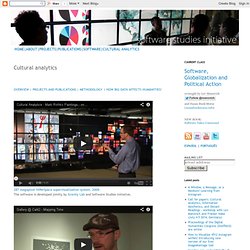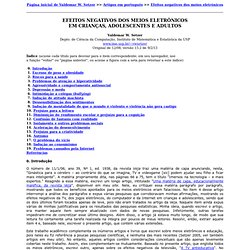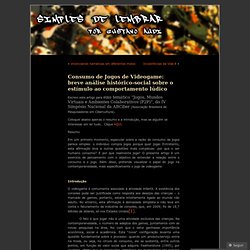

Cultural analytics. 287 megapixel HIPerSpace supervisualization system, 2009- The software is developed jointly by Gravity Lab and Software Studies Initiative.

Mapping Time exhibition at Calit2, Fall 2010 Cultural Analytics is the use of computational and visualization methods for the analysis of massive cultural data sets and flows. The concept of cultural analytics was developed by Lev Manovich in 2005 and the term itself was introduced in 2007. At Software Studies Initiative we are focusing on the theoretical questions and practical research in one area of cultural analytics - using digital image processing and visualization for the exploratory analysis of large image and video collections.
Here are some of the questions which drive our work: A Semester with Capital Vol 2 and David Harvey. Digital Initiatives at the Grad Center. Software Takes Command. A new book by Lev Manovich. This new book from the celebrated author of The Language of New Media is the first to offer a rigorous theory of the technology we all use daily - software for media authoring, access, and sharing. What motivated developers in the 1960s and ‘70s to create the concepts and techniques that now underlie contemporary applications like Photoshop, Illustrator, and Final Cut? How do these tools shape the visual aesthetics of contemporary media and design? What happens to the idea of a “medium” after previously media-specific tools have been simulated and extended into software? Lev Manovich answers these questions through detailed analysis of key media applications such as Photoshop and After Effects, popular web services such as Google Earth, and milestone projects in design, motion graphics, and interactive environments.
Digital Initiatives at the Grad Center. Through its academic social network, labs and various initiatives, the Graduate Center supports collaborative digital scholarship.

The CUNY Academic CommonsThe CUNY Digital Humanities Initiatives JustPublics@365 CUNY Mapping ServicesThe Collaborative Seeing StudioCommons in a BoxAmerican Social History ProjectNew Media Lab The CUNY Academic Commons The CUNY Academic Commons is an online, academic social network for faculty, staff, and graduate students of the City University of New York (CUNY) system. Designed to foster conversation, collaboration, and connections among the 23 individual colleges that make up the university system, the site, founded in 2009, has quickly grown as a hub for the CUNY community, serving in the process to strengthen a growing group of digital scholars, teachers, and open-source projects at the university.
Calit2 : California Institute for Telecommunications and Information Technology. Learning Games for Radically Affordable Computers. Aprendizagem em jogos para computadores acessíveis radicalmente. CTS Game Studies: Eventos. Encontro da IGDA Rio – Distribuição Digital nos Games | 22/11/2011.

Efeitos negativos dos meios eletrônicos. Índice (acione cada título para desviar para o item correspondente; em seu navegador, use a função "voltar" ou "página anterior", ou acione a figura com a seta para retornar a este índice) 0.

Introdução. Efeitos negativos dos meios eletrônicos. Consumo de Jogos de Videogame: breve análise histórico-social sobre o estímulo ao comportamento lúdico. Escrevi este artigo para eixo temático “Jogos, Mundos Virtuais e Ambientes Colaborativos (P2P)”, do IV Simpósio Nacional da ABCiber (Associação Brasileira de Pesquisadores em Cibercultura).

Coloquei abaixo apenas o resumo e a introdução, mas se alguém se interessar em ler tudo… Clique AQUI. EUA conduzirão pesquisa sobre a relação entre videogames, mídia e violência > Games. O presidente Barack Obama apelou nesta quarta-feira, 16 de janeiro, para o Centro de Controle e Prevenção de Doenças dos Estados Unidos para realizar mais pesquisas sobre a relação entre videogames, mídia e violência.

O assunto veio à tona porque a comissão montada pelo vice-presidente, Joe Biden, uniu forças para culpar os videogames por incidentes envolvendo mortes e violência. O memorando composto pelo Presidente aponta 23 ações executivas que reduzam a violência envolvendo armas. Revista Brasileira de Psiquiatria - Internet and videogame addiction: a review. Dependência de Internet e de jogos eletrônicos: uma revisão Internet and videogame addiction: a review Cristiano Nabuco de AbreuI; Rafael Gomes KaramII; Dora Sampaio GóesI; Daniel Tornaim SpritzerII IInstituto de Psiquiatria, Faculdade de Medicina da Universidade de São Paulo (USP), São Paulo (SP), Brasil IIPrograma de Pós-Graduação em Ciências Médicas: Psiquiatria, Universidade Federal do Rio Grande do Sul (UFRGS), Porto Alegre (RS), Brasil Correspondência OBJETIVO: Com a inclusão das novas tecnologias contemporâneas, a Internet e os jogos eletrônicos tornaram-se ferramentas de uso amplo e irrestrito, transformando-se em um dos maiores fenômenos mundiais da última década.

Descritores: Internet; Videogame; Dependência; Transtornos do controle de impulsos; Comorbidade OBJECTIVE: With the introduction of the new technologies to our daily lives, the Internet and electronic games have become widely and unrestrictedly used tools and one of the major global phenomena in the last decade. Vol. 8, núm. 2 (2013) Cultural analytics. An Outline for Computational Art History. Research & Education. "Visualizing Vertov" - new article by Lev Manovich with 33 visualizations available for download. All shots with close-ups of faces from The Eleventh Year (Dziga Vertov, 1928).

The shots are arranged in the order of their apperance in the film, left to right, top to bottom. The article presents visualization analysis of the films The Eleventh Year (1928) and Man with a Movie Camera (1929) by the famous Russian filmmaker Dziga Vertov. One of the goals of the project is to show how various dimensions of films can be explored using special visualization techniques inspired by media and new media art, as well as the basic principle of cinema itself - editing (i.e., selecting and arranging together media elements).
In some cases, we use digital image processing software to measure visual properties of every film frame, and then plot these measurements along with the selected frames. (For example, this approach allows us to visualize the amounts of movement in every shot in a film.) In other cases, we don’t measure or count anything. The article is an experiment.